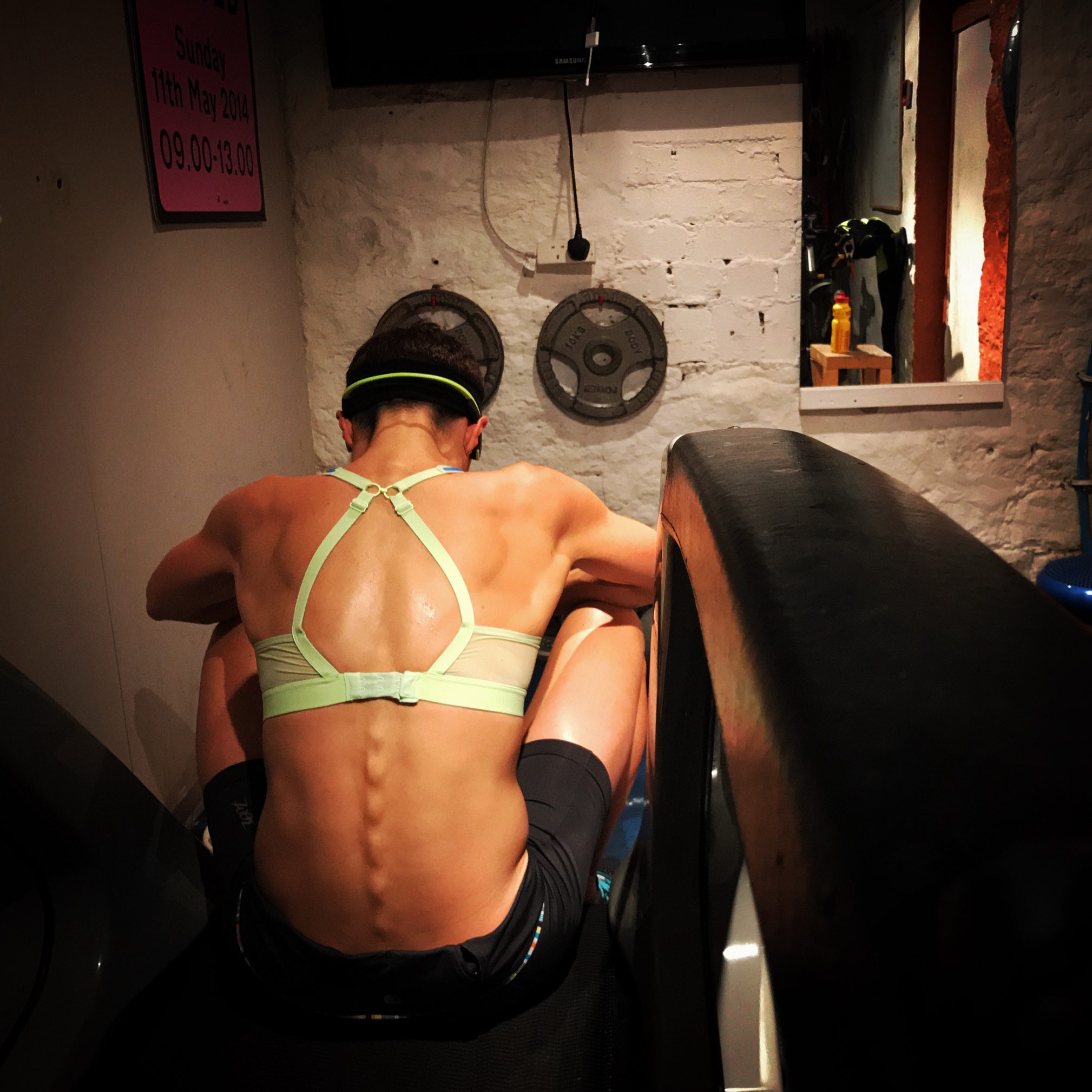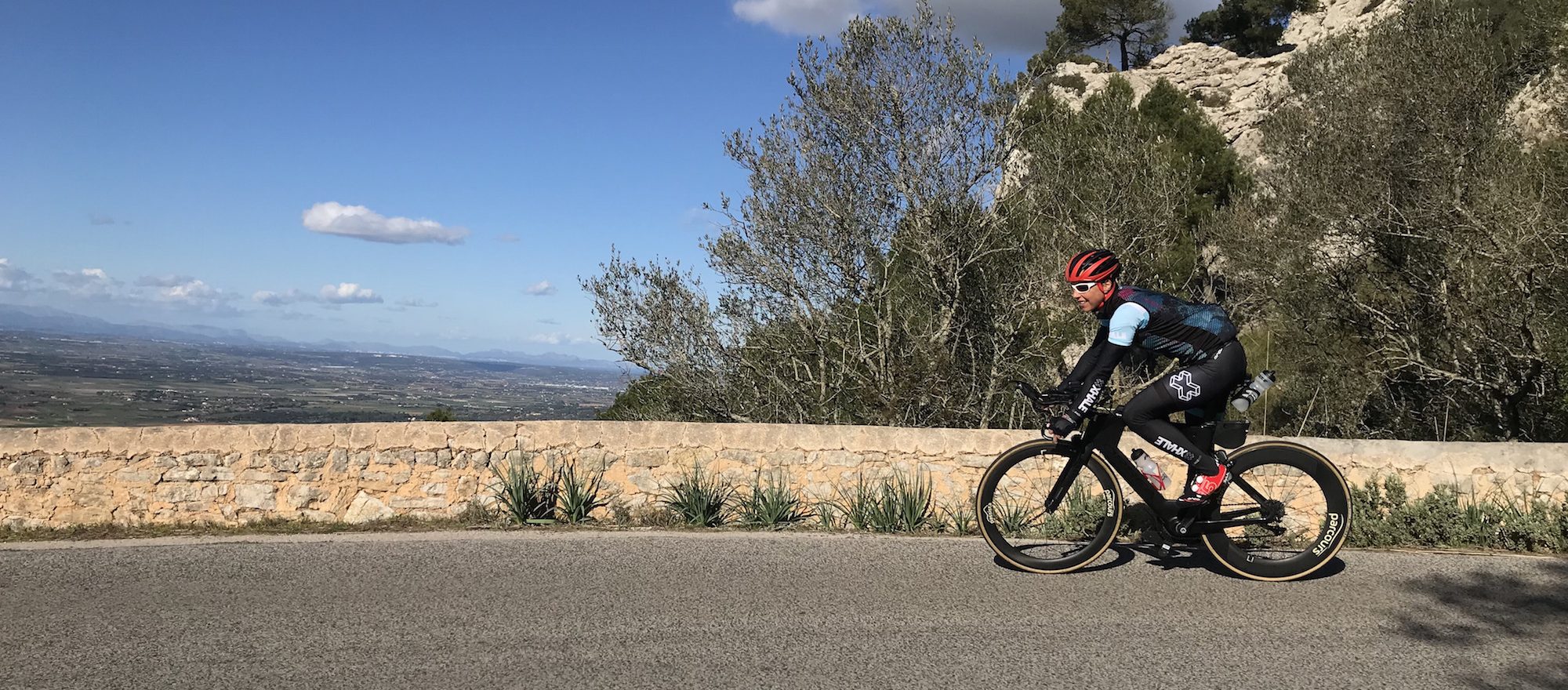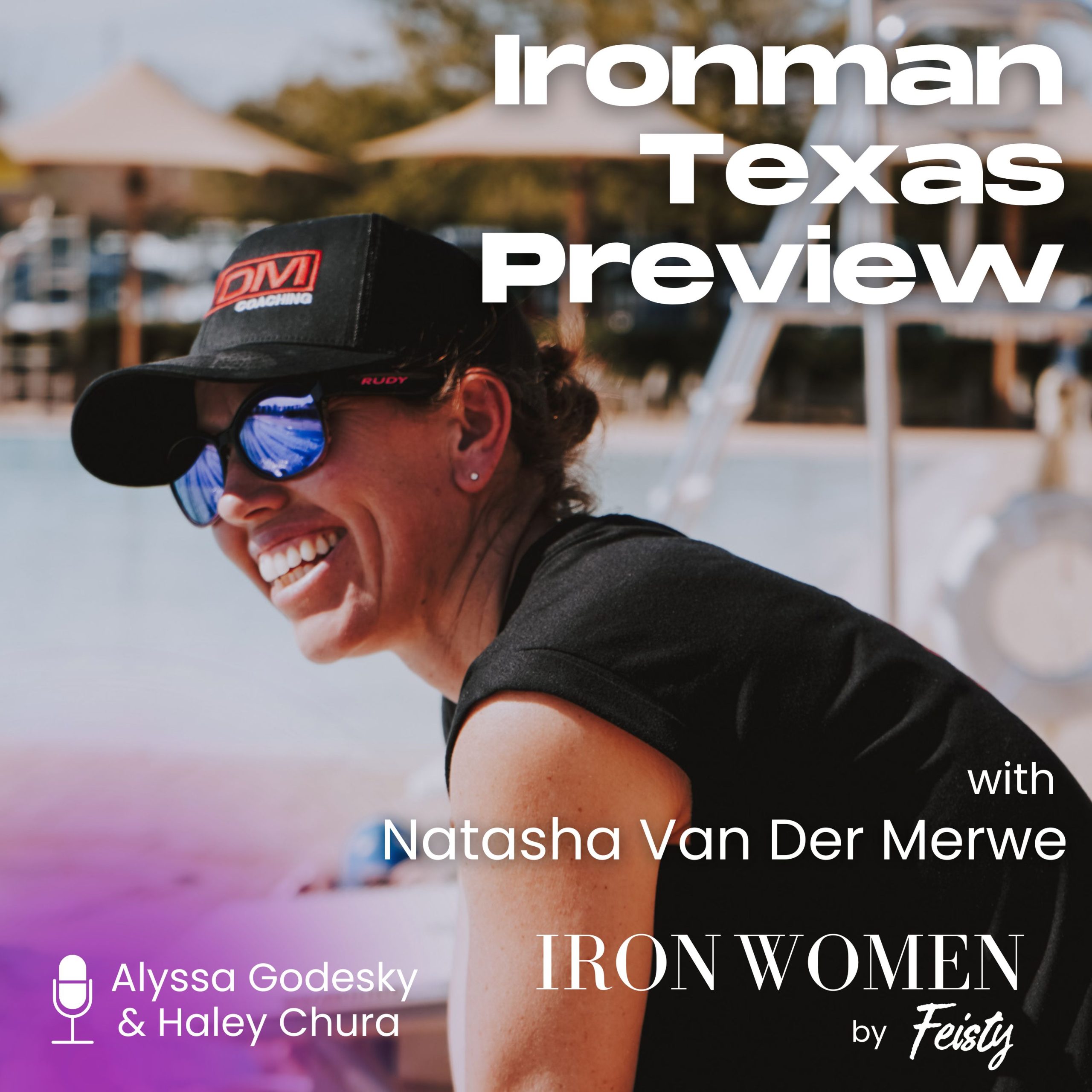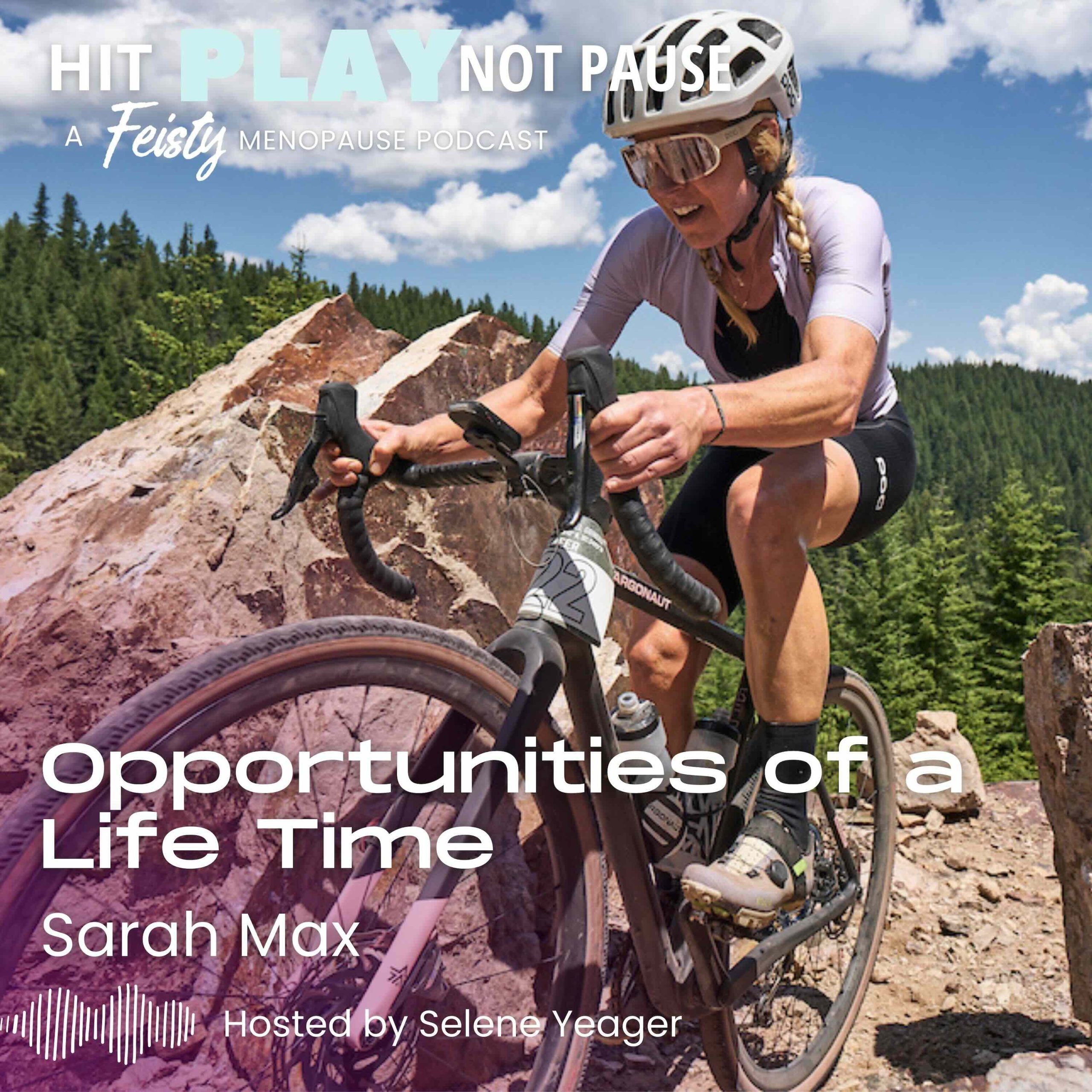November 6, 2018
Anaemia. The inside story

by Caroline Livesey
As a slightly older professional endurance athlete, I am usually a bit achy and stiff the morning after a hard training day. These are normal symptoms of heavy training. Physical symptoms are unavoidable, but mentally I have always bounced out of bed, ready for training, ready for life.
So when I started to really struggle to get motivated to train in February this year, I knew there was something going on. It wasn’t just motivation, I had other symptoms, too: I felt short of breath, weak, was making zero progress in my training (mostly going backwards), and generally felt unwell. I applied the “no excuses” mantra daily in training, thinking that I was just working through a tough patch in a tough training block. But after a few weeks, I invested in some blood tests. I assumed I would find peace of mind knowing there was nothing wrong. But there was.
I was diagnosed as anaemic with (for me) extremely low ferritin (11ng/ml) and haemoglobin (11.5 g/dL). It has taken me months to resolve, and along the way I have had conflicting opinions and mixed advice about almost every aspect, from treatment to training.
I wanted to combine the personal experience I had with the thoughts of an expert, and in a small way elevate awareness of this condition. Recently, I was lucky enough that Live Feisty connected me with Dr Georgie Brunivels, a research scientist at Orreco, who did her PhD on iron levels and the female athlete. I caught up with Georgie and asked her some of the questions I wish I had answers to months ago.

Caroline: Georgie can you explain what the correct set of blood tests is for diagnosing low iron, and what athletes should be looking for in their numbers?
Georgie: Part of my PhD was to ask the question “is ferritin a good marker of iron status in exercising women ”—and if so what is the appropriate criteria in athletes? One of the things that is already well known from previous studies is that if you take iron supplements when you don’t need to, this can be detrimental and have wide ranging negative impacts, including paradoxically, that your body is less able to absorb iron.
The first thing to highlight is that without a test, I would never advocate taking any iron supplements. If athletes do have ferritin measured, each athlete will have a level at which they should be concerned, and the point they should consider taking supplements is likely to be different. My research suggested that ferritin alone is a blunt tool as a marker of iron status. I would recommend that athletes always have haemoglobin measured as well as ferritin, in addition to transferrin saturation and total iron binding capacity (T.I.B.C.). Ferritin can be an initial indicator, but each athlete is likely to have a “normal” ferritin level for them, and this can vary hugely.
We have to look at other markers as well, especially where elite athletes are concerned. I believe that elite athletes should be tracking their own blood data as a part of the job. But for everyone, for general health and well-being, it is important to know what your normal levels are for many blood markers. That means that you have to take tests when you feel normal, as well as when you feel bad so you have a baseline. Also, if you have a history of iron deficiency, then you should get checked regularly as you may be predisposed to lower iron levels.
Low iron in itself is not anaemia. People are only iron-deficient and anaemic if their haemoglobin (Hb) is also low because of low iron.
Caroline: Can you explain the definition of anaemia? How does it develop, and what different causes are there? Does the length of time that you have had it effect treatment, and what other parts of your system can be effected by low iron?
Georgie: Iron deficiency can occur when people have low ferritin / low transferrin saturation /high iron binding capacity. However, low iron in itself is not anaemia. People are only iron-deficient and anaemic if their haemoglobin (Hb) is also low because of low iron. Anaemia can develop from other deficiencies too, such as B12. But with low Hb, the oxygen carrying capacity of the blood is reduced, and as a result, the ability to perform exercise is reduced. All cellular reactions within the body require iron; it is incredibly important. The potential for it to affect your overall health and well-being is huge. It is very important for everyday physiological function, everything from immunity to cellular growth.
To the best of my knowledge there is no evidence that a low iron for a long time changes the treatment to improve it. But it is really hard to tell what type of treatment someone needs without looking at the bigger picture. There are three main forms of treatment: oral, intravenous (IV) and intramuscular (IM).
When I am working with an iron-deficient athlete, I look at diet first. It is significant to appreciate that iron absorption in the body is controlled by a hormone called hepcidin. This is released in response to a few different stimuli, including inflammation, so levels can increase after exercise. Because of this, if you have just trained your capacity to absorb iron can be very low. If you always eat your sources of iron after training, then your levels of absorption will be reduced. Athletes have to ensure they eat iron well away from training times. If you are training all day, like some elite triathletes, then this can be difficult, and 8-9pm at night might be the only window. If not enough iron is taken in through food at that time, then iron supplementation can be beneficial so that the athlete can dictate the timing.
However, as I have already said, supplements should only be used when necessary. Research has shown that if you take too much iron, absorption can be reduced. For that reason, recent published work found that iron supplements are better taken on alternate days, not every day, and well away from training times.
Anaemic athletes need to make sure that after training there is a long enough window of time where they can eat enough iron and it can be absorbed.
Caroline: So Georgie, what is your recommendation for training for athletes that have been diagnosed with anaemia while they recover? What are the typical treatment options to help an endurance athlete recover as fast as possible?
Georgie: The key thing is that you need to be very savvy with monitoring your general wellness—heart rate and sleep, as well as other markers significant for you. The body is already struggling with the low iron, and if you continue to put it under stress, then you risk other complications.
I would advise that unless there is a real need not to train (if an athlete is too fatigued) then some training can continue, but it should be cut back. Anaemic athletes need to make sure that after training there is a long enough window of time where they can eat enough iron and it can be absorbed. I would always recommend a nutritional assessment, with focus on identifying those time windows during the day to absorb iron between training sessions. The optimal is two to three hours after training, and two to three hours after taking the iron before the next session. Taking in iron has to become the new priority, and anaemic athletes will probably find that they can’t hit the numbers that they need for progression in training anyway. Therefore, they should prioritize iron over training for a time until their [Hb] rises back to its normal (for them) level. In the majority of cases, I don’t think the other forms of treatment should be considered.
Caroline: Georgie, can you suggest a set of blood tests that an endurance athlete might get done regularly or if they are not feeling great, on top of the iron tests we have discussed?
Georgie: I would always suggest that they get immune function checked, a full blood count including white blood cells, alongside other inflammatory markers, which will show if there is any inflammation from other causes going on. I would also check for other key vitamins such as vitamins D and B12, and folate. I also recommend to have blood tests when you are relatively rested or before training, and when you are fasted too.

Therefore, to go back over this, my main points are:
- If an athlete is diagnosed with low iron, their nutrition should be the first thing that is checked. A nutritionist can help determine if enough iron is being eaten and far enough away from hard training sessions.
- All athletes should be eating iron sources regularly.
- When supplementing, minimise the frequency of dosing as the bigger the dose the greater the windows for restricted absorption. So in iron deficiency, I recommend supplementing every other day. Remember that less is more, and this will take time to resolve, so be patient.
- For specific dosages that will work for you, talk to a doctor about the best type and supplement for you. It’s important to find one that suits you and doesn’t affect your stomach too much.
I hadn’t appreciated that a simple lack of iron is not the same as a long term iron deficiency that has led to anaemia, with low haemoglobin and low haematocrit.
I wish I had talked to Georgie before I struggled with my own treatment. A lot of what she said when I talked to her five months after my own diagnosis made sense. There is so much misinformation out there, and I was definitely sucked in to some of it.
With my anaemia diagnosis came an assortment of emotions. Relief mainly—“This is easy to treat, right? I will be back to full strength in no time!”—but also belief that it wasn’t that serious.
In fact, many well-meaning people including athletes who have experienced anaemia, told me that correcting iron levels felt like a switch going back on. Almost like coming down from altitude. I was excited. I totally believed that I was experiencing a minor blip that would be “fixed” in no time. With just 6 weeks until a big race, I believed I had plenty of time to get some treatment and crack on.
I did not realise at the time how much of an iron deficiency hole I was in. I hadn’t appreciated that a simple lack of iron is not the same as a long term iron deficiency that has led to anaemia, with low haemoglobin and low haematocrit.
One of the things I struggled with immediately following the diagnosis was getting consistent advice on what to do next: what training I should be doing, and what the treatment plan should be. Treatment options I was presented with ranged from taking a single, massive hit of iron into the blood (IV, under the WADA approved limits) to taking a low dose supplement like Floridax to just including more iron in my diet. Some said there was no harm in training, and that I would just feel better once iron levels improved. Others said that rest would be better to let the body regenerate the blood more efficiently. Like any athlete I heard what I wanted to hear—train more/normally and get an instant fix.
If I was second guessing my fatigue every time I felt it, then I would constantly be wondering if I was feeling anaemic or just giving myself an excuse not to train the last session of the day.
In the end I had treatment, including iron injections, but I struggled with the condition for five months before I was truly on top of it. My body rejected the super expensive “instant fix” injection option, which was a risk that I had not been advised about. It took time and consistent low dose supplementation, as well as changes to my diet and timings before I felt any real impact. For me, an iron oral spray (from Better You) is much more effective and has no impact on my stomach, unlike some of the basic iron supplements. At the time I was frustrated and impatient, but given my low Hb levels, it’s not unusual that I took longer to recover and get back to full health.
I have learnt so much from the experience. In the future, I will get regular blood tests to make sure I am aware of my iron levels, especially in heavy training blocks. Some people, especially non-athletes (for some anaemia is common during pregnancy), have said to me that they can feel it instantly when their iron levels are dropping, and they don’t need tests to tell them. For me that is just not the case. I expect I am similar to many Ironman athletes in that tiredness is just part of the week. If I was second guessing my fatigue every time I felt it, then I would constantly be wondering if I was feeling anaemic or just giving myself an excuse not to train the last session of the day. I also know from years in the sport that I can train though fatigue and pain to a worryingly high degree.
So I need measurable markers to help me determine when to slow down or rest. My local GP is fabulous, and I am lucky that they will usually take blood tests for me when I need them. However, there are also online medical checking companies (I used Medichecks) that offer blood testing services that you can take at home and post back to them. I have done a few of these, and they are easy to administer and results are fast. It’s worth the investment if you live somewhere a doctor’s appointment is hard to come by.
The triathlon community is a wonderful place, and it’s fabulous that people are so generous with their time and advice. We can always learn from the experiences of others, but it’s also important to remember that you are an individual. Our tendency is to hear what we want to hear when given recovery times or options. We take the lowest figure and reduce it slightly. “6-8 weeks you say? Ok that’s 5 weeks for me”. Staying positive through injuries and illnesses is imperative, but don’t fall into the trap of thinking you can shortcut recovery. Simple fixes are rarely as simple as advertised, and if your body needs time, then it needs time.
____________________________________________________________________________________
Dr Georgie Bruinvels is a Research scientist at Orreco, a sports science and data analytics company, and is the Lead Scientist for FitrWoman, an app designed to help women train smartly around their menstrual cycle. Find Georgie on insta here: @gbruinvels @fitrwoman
Caroline Livesey is a professional triathlete and engineer. For more go to www.carolinelivesey.co.uk


 Outspoken Women in Triathlon Summit Returns Bigger than Ever
Outspoken Women in Triathlon Summit Returns Bigger than Ever  Driving the Lamborghini: Productivity and the Power of Paper
Driving the Lamborghini: Productivity and the Power of Paper  5 take aways from the Compete Sports Diversity Summit
5 take aways from the Compete Sports Diversity Summit  Simple Tips to Hone Your Bike Handling Skills
Simple Tips to Hone Your Bike Handling Skills 

